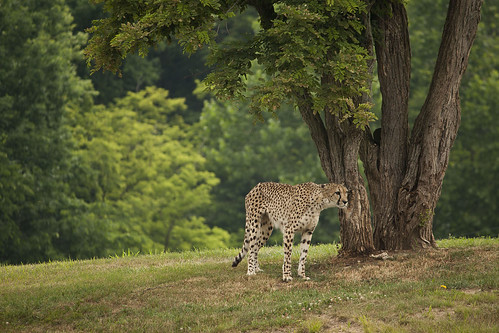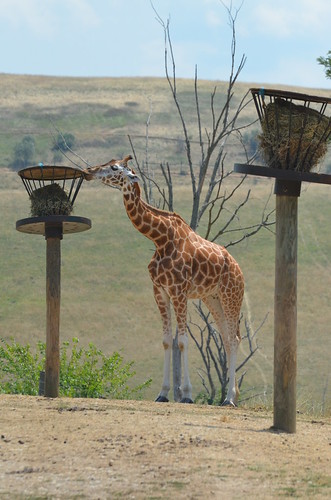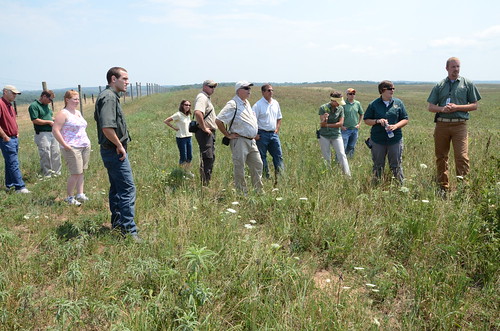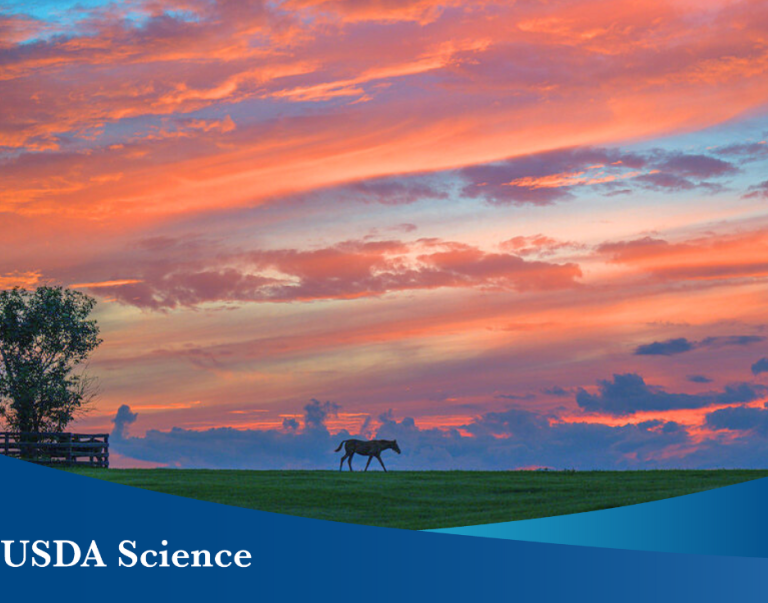
One of the world’s largest wildlife conservation centers, The Wilds, is nestled among the rolling hills of southeastern Ohio’s Muskingum County. Uniquely, the safari park and conservation center is located on top of 14 square miles of reclaimed surface mined lands.
It’s on this reclaimed landscape that USDA’s Natural Resources Conservation Service (NRCS) and The Wilds have partnered together on a grasslands prairie project through a 3-year Conservation Innovation Grant (CIG).
Through CIG, NRCS awards competitive grants for projects that develop and demonstrate innovative technologies and approaches to natural resources issues. The Wilds received funding from NRCS to create a 60-acre demonstration project showing how a combination of warm- and cool-season grasses can be successfully incorporated into a productive, sustainable rotational grazing system.

“The project explores using prairies for grazing, biomass production, increasing soil fertility and improving wildlife habitat, with the hope that it will serve as a model for area farmers,” says Shana Bird, Restoration Ecology Program Director for the center.
The project’s mix of native prairie plant species, including big blue stem grass, Indian grass, switchgrass and eastern gamma grass, were selected for their adaptability to marginal soils , their suitability for livestock grazing, and their ability to rebuild soils through extensive root systems.
NRCS works with farmers and ranchers to voluntarily incorporate conservation onto their lands, and The Wilds’ demonstration project will help NRCS field office personnel select species and practices best suited for marginal lands.
“This shows even the landowner with soils that have limited production capacity some options for producing quality forages,” says NRCS State Biologist Mark DeBrock.

The Wilds is a popular tourist attraction and education center, with more than 100,000 visitors last year alone. Today, the grasslands and forested areas of The Wilds are in varied stages of restoration and reclamation. There are an estimated 125 lakes on the property, along with about 164 acres of wetlands.
“We essentially have a 10,000-acre living laboratory,” Byrd says. “This is a landscape that is still in recovery and will be for some time.”
Find out about the Conservation Innovation Grant program.
Check out more conservation stories on the USDA blog.



